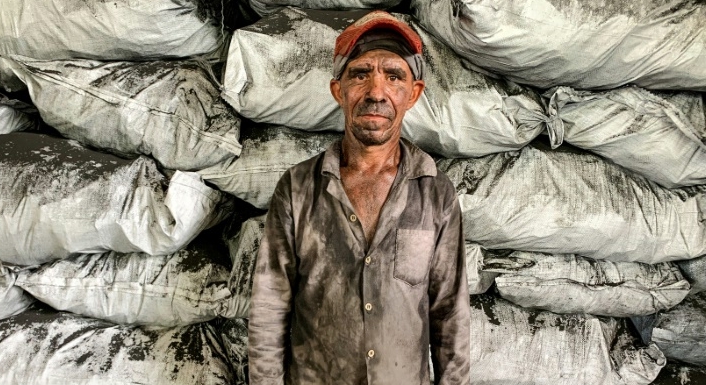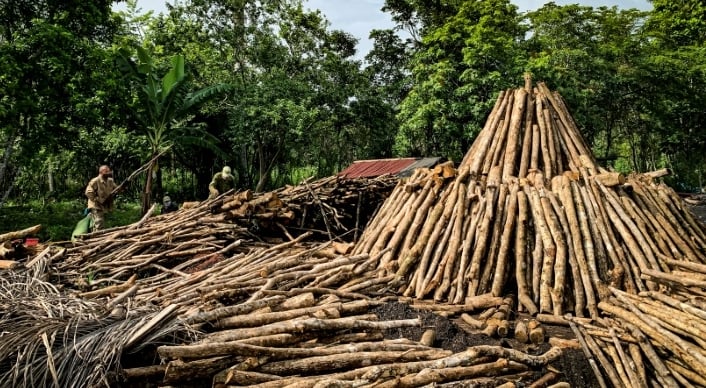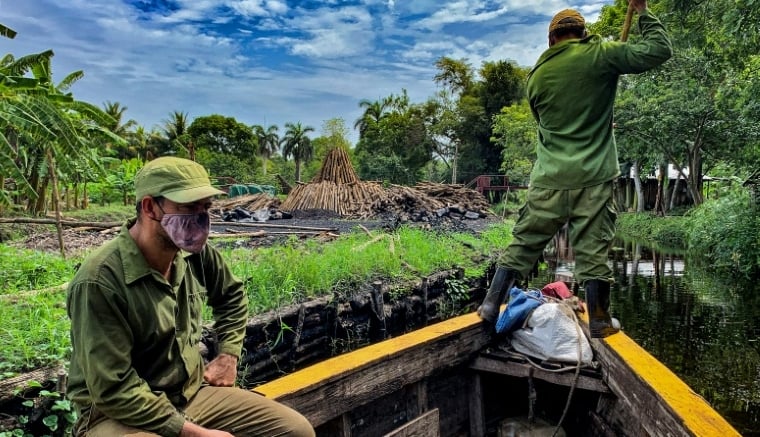
By Katell ABIVEN
SAN AGUSTIN, Cuba (AFP) — In a remote swamp in central Cuba, men hew wood and build large pyres that smolder for days as they keep vigil.
They are the coalmen of Cienaga de Zapata, reviving an old tradition of making charcoal — not in industrial furnaces, but open-air fires.
"It's a little hard, but I like it," said 59-year-old Daniel Diaz, his face and clothes blackened by soot.
He is one of a few dozen men taking part in a government-sponsored job-creation program to bring back traditional charcoal-making to an area where it used to be a way of life.
Diaz lives with his family in a wooden house next to a river in the Cienaga de Zapata national park in the Caribbean's largest wetland. He is one of few in the project to have worked in coal production before — with a career of 33 years behind him.
His house is just a few meters from the charcoal fires. Behind him stands a tall wood pyramid, soon to be covered in straw and soil for the combustion process which takes five or six days to produce charcoal.
Diaz will keep an eye on the process "day and night" to ensure the thick smoke does not become fire.
As he labors, his nine-year-old daughter plays in the river nearby.
Charcoal is made, traditionally and in modern times, by heating wood in a low-oxygen environment.
With some 80,000 tons sent abroad every year, mainly to Europe, charcoal is one of sanctions-stricken Cuba's largest exports, though almost all of it is now produced on industrial scale.
In Cuba, the traditional "carboneros" of Cienaga de Zapata are famous: it is with them that Fidel Castro spent his first Christmas after the revolution of 1959.
Photographs from the time show the revolutionary leader surrounded by coalmen and their families in the region otherwise known for its crocodiles.
Over the years, however, the traditional way of making charcoal has been largely abandoned.

They came looking
Now the government is seeking to bring it back.
"They had a shortage of experienced people. So they came looking for me," said Orlando Prado, 73, retired until he was brought onto the project when it started last year.
In a large hangar on the river bank, ancient machines are being restored to produce the wooden tools used to collect and transport the charcoal produced.
Workers have been clearing canals dug by the Spanish at the start of the 20th century and which have become blocked over time — some 30 kilometers of waterways snaking through the forest.
Others are patching up old "bongos" — long wooden boats used to transport charcoal and the wood used to produce it.
The boats are propelled with long poles pushed along the river bed — a way of saving on fuel in a country experiencing its worst economic crisis in 30 years and a severe shortage of basic goods.
For now, production from the Cienaga de Zapata project is modest: some 600 tons in its first year, with a goal of 700 tons this year.
"The aim of our company is to continue producing coal by seeking an ecological balance between nature and humans," said Yoel Salgado, a director of forestry with the Cienaga de Zapata conservation agency, Ecocienzap, which runs the charcoal project.
He lists different trees being planted to replenish the forest and produce more coal: cedar, mahogany, acacia and other threatened species.
"Coal is an emblematic product of this region," added Salgado's colleague Oscar Verdeal Carrasco, who hopes the return of the ancient trade to the area will become a tourist attraction one day.

ADVERTISEMENT
ADVERTISEMENT


































